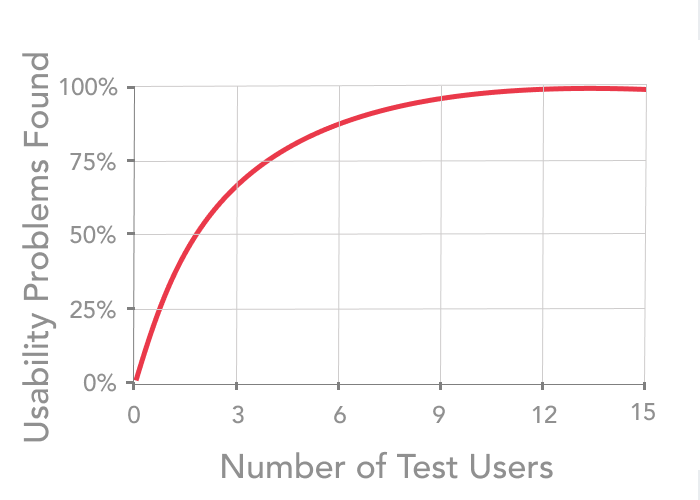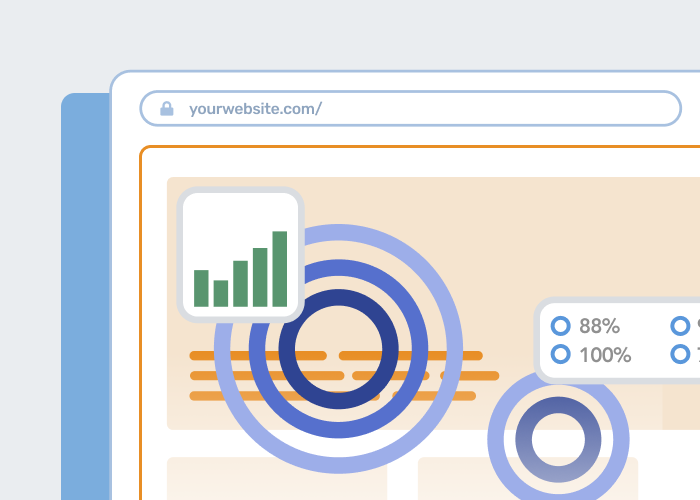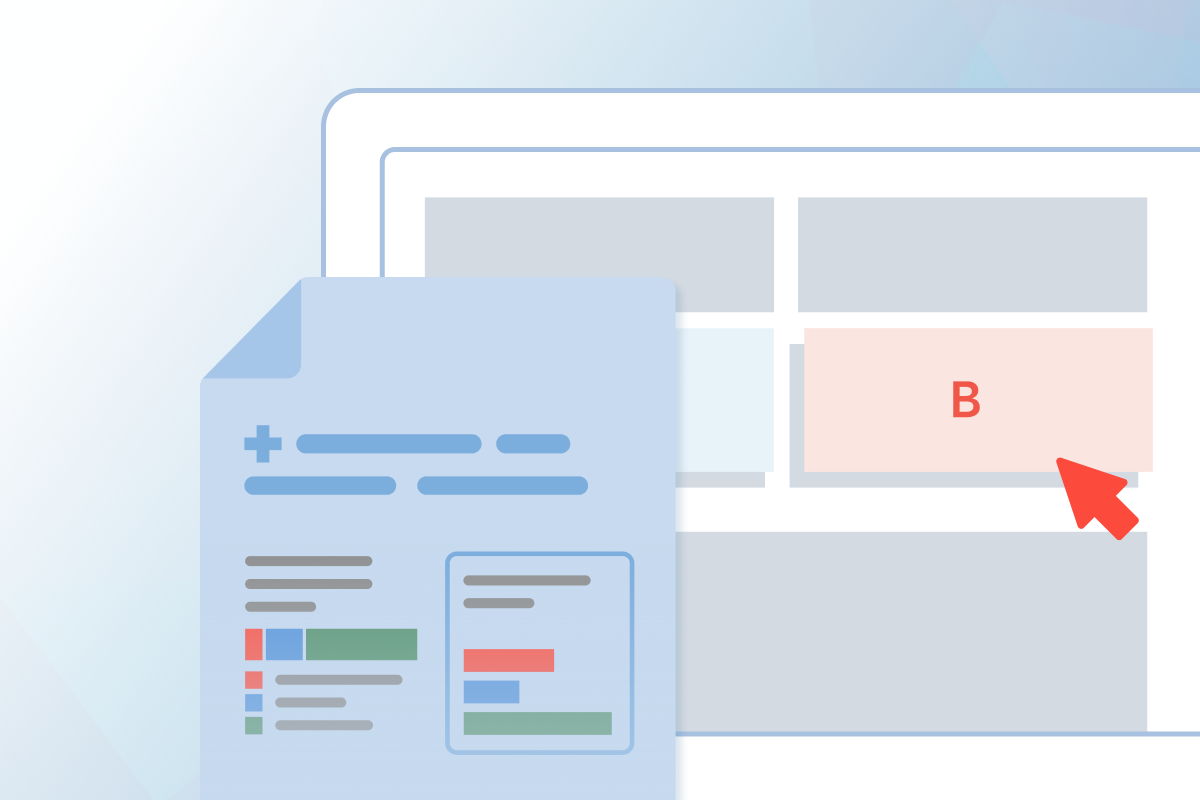Imagine your company has just launched a new website that will help users manage and track their fitness goals.
After a few weeks, you begin to notice that existing users have seemingly abandoned their profiles and have stopped tracking their workouts. Then, you notice a rise in negative reviews beginning to appear online. New user signups begin to decline. Despite all of the “great” features included on the website, users just don’t care to stick around.
It’s these kinds of situations that can benefit from user testing to gather qualitative feedback from real humans to identify problems and make data-driven decisions to solve them.
What is user testing?
User testing is an important part of a good design process, allowing companies to better understand how users interact with their products and services.
It’s also a great way to gain valuable insights into behaviour trends, identify areas of improvement, and gain clarity around user needs, which ultimately creates a better user experience for the target audience.
User testing can be conducted in two ways:
- Moderated testing
- Unmoderated testing
With a moderated user test, a facilitator is required to help guide users through a series of key tasks (or scenarios), while prompting feedback from a participant. In an unmoderated test, no facilitator is required as users are often left on their own to complete tasks, usually with the prompting of third-party software. Both types of testing are useful and come with their own considerations.
What are the benefits of user testing?
Before diving into the finer details of the testing process, let’s uncover some of the key reasons you might want to consider testing on your own website.
By running user testing scenarios, you will:
- Understand user needs, impressions, preferences, and frustrations
- Outline opportunities and uncover issues
- Get open and honest feedback from real users
- Confirm (or invalidate) a hypothesis or a design decision
- Create a stronger, more user-driven product
- Increase conversion rates after correcting a problem
- Lower costs (from development expenses to customer service)
When navigating through your website, users will help identify areas where they experience difficulty understanding the website or completing certain tasks. By identifying how users currently interact with the site, we can pinpoint areas of improvement and provide insights and recommendations to improve this.
How does user testing work?
At its core, user testing is a process used to identify usability issues on a website.
It involves recruiting users and having them interact with your website while attempting to complete various tasks and scenarios, all while vocalizing their experience and impressions through any problems or difficulties. These tasks may range from submitting a contact form, to simulating an online transaction, to working through a website’s complicated navigation structure. The mission is to help identify which areas of the website might be frustrating or causing confusion among users so that they can be addressed.
As mentioned, this process can be accomplished through two types of testing methods, depending on the needs of the project, the budget, and the availability of a moderator.

Moderated user testing
Moderated user testing can be accomplished by having a facilitator guide or moderate a participant as they navigate through a website. This can range from asking the participant open-ended questions to elicit feedback on their experience, or to giving them specific key tasks to complete on a website.
The main benefits of this method of testing are:
- A higher degree of interaction between the participant and moderator
- The ability to observe participant body language, provide prompts, and ask for clarification
- Build a deeper sense of rapport and trust during the session
However, the main drawbacks might be:
- It’s a more time-consuming process, as it requires the presence of a moderator
- It requires scheduling / coordination with the participant
- Can become expensive
- There is potential to have accidental bias from the moderator / participant during sessions

Reference: “Why You Only Need to Test with 5 Users” – Link
Oftentimes, user testing in the moderated format can be done with 3-5 participants in order to capture roughly 75% of all pain points a user may be experiencing. More than this amount may lead to repeat observations, but this could also be good for validating that an issue exists.

Unmoderated user testing
Unmoderated user testing can be accomplished without a facilitator and is often completed using third-party software. The software prompts participants to provide feedback, navigate through key scenarios, and offer commentary remotely. These sessions are generally recorded and may be reviewed by a UX team after the participant has finished.
The main benefits of this method of testing are:
- Testing can be done anytime, anywhere, with quick results
- Lower cost overall
- Prioritizes time sensitivity and flexibility
However, the main drawbacks might be:
- Participants are left on their own, so quality is dependent on them
- No opportunity to prompt or offer clarity
- Likely requires a higher number of participants for better data
Which one is best for you?
Choosing between moderated or unmoderated user testing will ultimately depend on your research goals, timeline, budget, and the complexity of your website.
The following factors are worth considering when making this decision:
- Research goals: What are you trying to learn from user testing? If you need in-depth feedback and want to observe participants’ behaviour and thought processes, moderated testing may be more appropriate. If you want to gather feedback on a large scale quickly, unmoderated testing may be more suitable.
- Timeline: Moderated testing usually takes longer than unmoderated testing because it requires scheduling, preparing the testing environment, and conducting the sessions. If you have a tight timeline, unmoderated testing can be completed faster and more efficiently.
- Budget: Moderated testing can be more expensive than unmoderated testing due to the cost of hiring a moderator (or, in some cases, renting a testing facility). If you have limited resources, unmoderated testing may be a more cost-effective option.
- Product complexity: If your website is complex and requires a high level of guidance, moderated testing can help you get more detailed feedback from participants. On the other hand, if your website is straightforward and easy to use, unmoderated testing may suffice.
- Participant recruitment: Recruiting participants for moderated testing may be more challenging since you need to find individuals who are available during the testing period. Unmoderated testing allows you to reach a larger pool of participants who can complete the testing at their convenience.
Ultimately, the decision between moderated and unmoderated testing depends on your specific needs and resources. It’s essential to consider the advantages and limitations of both methods and choose the one that aligns with your research goals and constraints.

How does this work with seoplus+?
The following section outlines the traditional steps in our user testing process:
Strategy + setup
We have a discovery meeting with you to discuss any current pain points on your website or process (ie. what is known, unknown, and what assumptions exist currently). Then we outline 5 – 10 key tasks we’d like participants to complete during the session. This is also the stage where we outline your target audience and recruitment preferences.
Testing
Here we configure our testing sessions on our third-party platform, which includes setting up our projects and recruiting from a pool of users. Depending on the method of testing, we will either set up a project that will prompt users through a series of tasks or join participants in real time to moderate the testing session.
Analysis + reporting
Once the participants have completed their sessions, and we have a log of their recordings, notes, and testing metrics, we then review the data for each key task to summarize the findings. These results are organized in a report with the following summary metrics:
- Task success rates
- User paths-to-goal
- Common outcomes / pain points
- User feedback
- Recommendations
How can seoplus+ help you?
If you’re looking for support in the areas of UX auditing, user testing, and strengthening the user experience of your website, reach out to us—we’d be happy to help your website grow!
